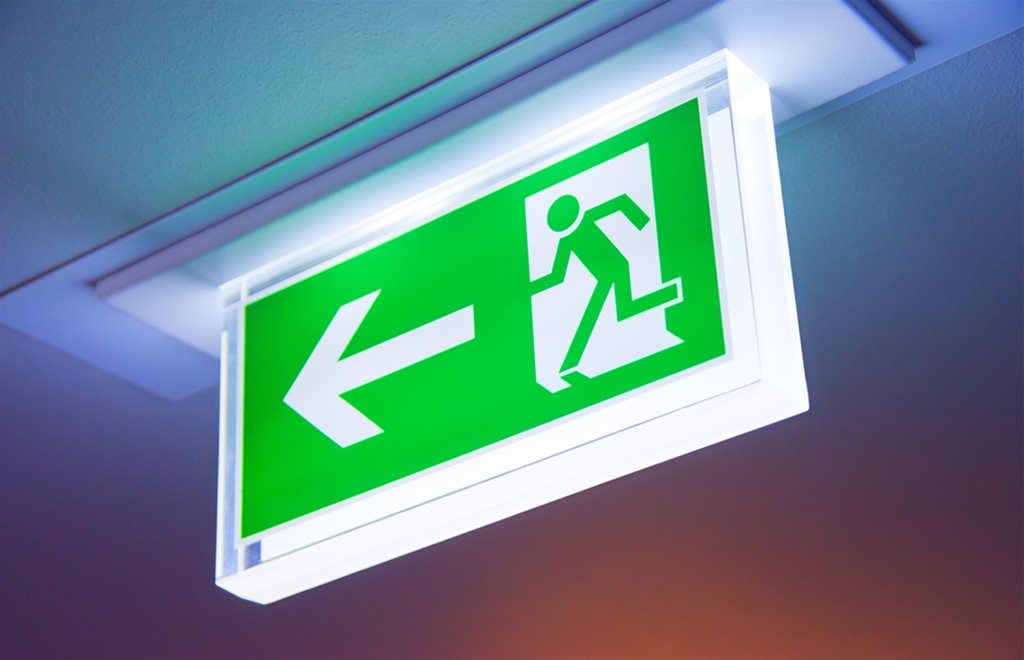A new certification scheme for evacuation alert systems in high rises is now on stream to aid firefighter operations, writes Richard Jenkins
IN RESPONSE to a recommendation from the first phase report of the Grenfell Tower inquiry and to changes in building regulations in Scotland, BAFE developed its SP207 Evacuation Alert Systems Scheme. The scheme is designed to support the need for fire and rescue services (FRSs) to initiate an evacuation alert signal within flats in a block in a controlled and managed way in the event of an incident.
Of particular benefit in blocks over 18m in height, the installation of evacuation alert systems represents an additional safety feature in the FRS toolkit and a valuable complement to the stay put policy. Evacuation alert systems are not a substitute for fire detection and fire alarm systems, but rather intended for use solely by FRSs attending the site to evacuate part or all of a block of flats, saving time in raising the alert and enabling the occupants of the critical areas to be evacuated as a priority.
Those responsible for the safety of these buildings – including, for example, residential managing agents – are thus now able to demonstrate their due diligence by selecting professional fire safety providers approved by BAFE’s latest scheme, and offered by third party certification body the National Security Inspectorate (NSI), to install and maintain such systems.
NSI audits the following BAFE fire safety schemes:
- Maintenance of Portable Fire Extinguishers (SP101)
- Life Safety Fire Risk Assessment (SP205)
- Design, Installation, Commissioning and Maintenance of Fire Detection and Fire Alarm Systems (SP203-1)
- Design, Installation, Commissioning and Maintenance of Fixed Gaseous Fire Extinguishing Systems (SP203-3)
- Design, Installation, Commissioning and Maintenance of Emergency Lighting Systems (SP203-4)
- Design, Installation, Commissioning, Recharge and Maintenance of Kitchen Fire Protection Systems (SP206)
- Design, Installation, Commissioning and Maintenance of Evacuation Alert Systems (SP207)
Evacuation changes
During the Grenfell Tower fire on 14 June 2017, when London Fire Brigade decided to abandon the stay put policy, it proved almost impossible to implement a total evacuation due to the lack of an effective means of alerting residents. The only means available, namely firefighters knocking on doors, was an impossible task in the Grenfell scenario.
Following this, BS 8629: 2019: Code of practice for the design, installation, commissioning and maintenance of evacuation alert systems for use by fire and rescue services in buildings containing flats was published. This new British standard provides detailed guidance on how to design, install, commission and maintain an alert system to advise residents in flats to evacuate in the event of a fire.
It was written to help ensure systems are fit for purpose and to encourage uniformity in design to assist the attending FRS. Initially, the expectation was that the application of evacuation alert systems would be somewhat limited, and only follow consultation or agreement with local FRSs. Requirement for the certification of such installations was not expected.
However, two significant developments made the installation of evacuation alert systems far more likely following Grenfell. Firstly, the formation of a Scottish government review panel; and secondly, the Grenfell Tower inquiry.
Scottish review panel
In September 2017, the Scottish government formed an expert review panel with a remit to examine building regulations in Scotland and associated guidance. The panel determined that the country’s Domestic Technical Handbook (the Scottish equivalent of Approved Document B of the Building Regulations [ADB]) should be amended to advocate that, in new blocks of flats with a storey located at a height of more than 18m above ground level, facilities should be provided for use by the FRS to initiate an evacuation alert signal. This would be by means of evacuation alert sounders within the flats, thus obviating the need for firefighters to manually alert occupants.
As the recommendation was duly accepted by the Scottish government, the Domestic Technical Handbook was amended accordingly in 2019.
Grenfell inquiry
In the Grenfell Tower inquiry’s first phase report, published on 30 October 2019, chair Sir Martin Moore-Bick made the recommended in section 33.22(d) that ‘all high-rise residential buildings (both those already in existence and those built in the future) be equipped with facilities for use by the fire and rescue services enabling them to send an evacuation signal to the whole or a selected part of the building by means of sounders or similar devices’.
Also, in May 2020 a document published by the Ministry of Housing, Communities and Local Government covering fire safety measures in new high rise blocks of flats revealed that 92% of respondents to the consultation on sprinklers and other fire safety measures in new high rise blocks of flats believed ADB should include a requirement for an evacuation alert system.
In this context, and given the seriousness of the drive toward evacuation signalling, BAFE duly developed its SP207 scheme. The scheme’s development group included representation from the fire safety industry and the FRSs. Going forward, the group will monitor the scheme’s effectiveness in the belief that fire safety is about life safety.

MOT principle
SP207 employs the MOT principle of assurance, whereby the NSI and BAFE certificate of compliance issued by the approved fire safety provider at the time of system commissioning is renewed at each scheduled maintenance visit (every six months), as evidence of a system’s integrity as fit for purpose. Enforcing authorities and insurers thus have the means to verify that a system continues to meet the original design and the recommendations of BS 8629, and functions as intended.
This concept of the scheme can be compared to the vehicle MOT, first introduced in 1960, which was initially greeted with some dismay at the implied expense involved. However 60 years on and the MOT has become widely regarded as an accepted necessity, while its success in increasing safety on our roads is unquestioned.
MOT style certificates of compliance which are issued for evacuation alert systems will provide residential managing agents and other relevant people with evidence of competence in their installation and maintenance, as required by the Regulatory Reform (Fire Safety) Order 2005 [FSO] for England and Wales, the Fire (Scotland) Act and the Fire Safety Regulations (Northern Ireland).
Importantly, this will give the customer and relevant enforcing authorities (such as the fire authority and building control) the confidence that the work has been undertaken by competent organisations.
Prioritising competence
The SP207 scheme has been developed to permit organisations involved with evacuation alert systems to become third party certificated and BAFE registered in recognition of their competence to undertake their scope or scopes of work. In terms of competency, ADB states in Section 1.23: ‘Third party certification schemes are an effective means of providing the fullest possible assurances, offering a level of quality, reliability and safety.’
In order to attain an NSI or BAFE certificate of approval, which is valid for three years, providers are required to undergo a series of ‘due diligence’ checks covering aspects such as financial stability, company directors’ verification and the competency of key individuals involved in the service provision, such as system designers. An initial certification audit then covers aspects including the company’s office processes and procedures; checks on the competency and continuing professional development (CPD) records of those providing the system or service; and an examination of the processes for providing the product or service.
Importantly, audits are also carried out on site at premises with recently installed systems, or where maintenance work has been carried out, in order to assess the competency of personnel who have carried out the work. A certificated company signs up to an audit programme over three years, which is tailored to its needs and includes annual audits to scrutinise ongoing competence and compliance with relevant standards, codes of practice and applicable legislation.
Auditors also focus on evidence of ‘continual improvement’, raising improvement needs and observations where it has been identified that corrective action is required. At the end of the three year term, a successful ‘recertification audit’ will result in a new certificate of approval being issued.

Dutyholder implications
The recommended use of evacuation alert systems has clear implications for those responsible for fire safety in blocks of flats that are 18m or higher. These responsible persons or dutyholders can effectively discharge their responsibilities for providing these systems and other fire safety services by using certificated service providers. Such companies can demonstrate their compliance with the relevant standards, as well as their competence to carry out this work, providing significant assurance and rigour.
NSI was one of the industry bodies which was involved throughout the inception and development of BAFE SP207. It was therefore fitting that in October, NSI became the first certification body to be awarded accreditation by the United Kingdom Accreditation Service (UKAS) for its Evacuation Alert Systems Scheme, incorporating the requirements of SP207.
SP207 in turn calls upon BS 8629 and, as the scheme is modular, companies can gain certification from NSI for one or more of the modules provided such as the design, installation, commissioning and/or maintenance of systems.
However, if a supplying company provides design, installation, commissioning and maintenance of these systems, then it must demonstrate competence in, and hold approval for, each of these modules: it cannot pick and choose the modules for which it wants approval. Accordingly, proof of BAFE and NSI approval and third party certification should be requested when commissioning a service provider.
Robust instrument
Important lessons have been learned from the Grenfell Tower fire. These lessons are being put into practice in a range of areas, and they are helping to prioritise long overdue reforms to fire safety measures across the board.
Among these, the SP207 scheme – delivered through third party certification – is a powerful mechanism for increasing public safety, and providing the FRSs with the means to manage building evacuations in a controlled and effective way.
Residents, property operators, insurers and fire authorities can take comfort from the fact that the evacuation alert systems scheme – where it is adopted in blocks of flats, and not only those over 18m in height – will deliver well designed, installed, commissioned and maintained systems. When called upon, these systems will help safeguard both flat dwellers and the firefighters responding in the event of an incident, and in so doing will help save lives
Richard Jenkins is chief executive officer of NSI